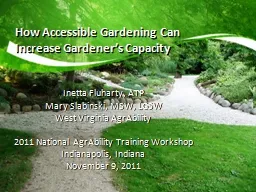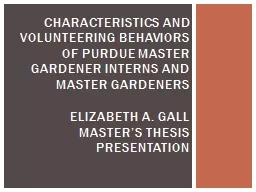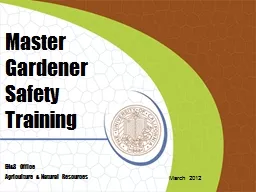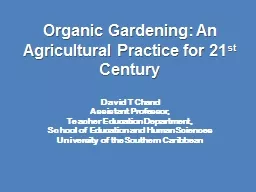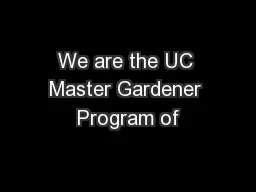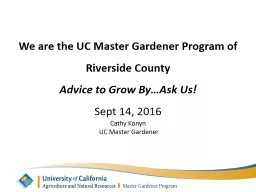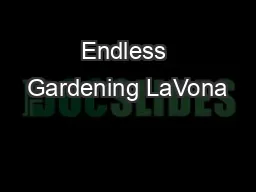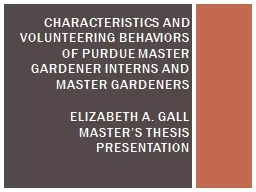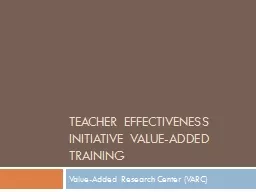PPT-How Accessible Gardening Can Increase Gardener’s Capacity
Author : alexa-scheidler | Published Date : 2016-07-20
Inetta Fluharty ATP Mary Slabinski MSW LGSW West Virginia AgrAbility 2011 National AgrAbility Training Workshop Indianapolis Indiana November 9 2011 What is
Presentation Embed Code
Download Presentation
Download Presentation The PPT/PDF document "How Accessible Gardening Can Increase Ga..." is the property of its rightful owner. Permission is granted to download and print the materials on this website for personal, non-commercial use only, and to display it on your personal computer provided you do not modify the materials and that you retain all copyright notices contained in the materials. By downloading content from our website, you accept the terms of this agreement.
How Accessible Gardening Can Increase Gardener’s Capacity: Transcript
Download Rules Of Document
"How Accessible Gardening Can Increase Gardener’s Capacity"The content belongs to its owner. You may download and print it for personal use, without modification, and keep all copyright notices. By downloading, you agree to these terms.
Related Documents

